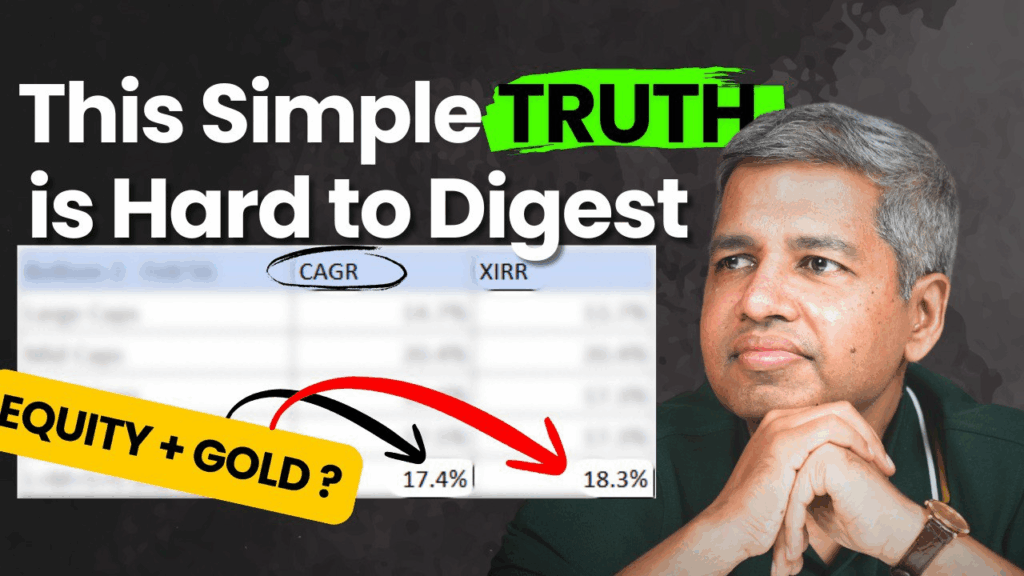Where is the market headed?
Markets were once again hit by fresh tariff concerns, with the White House proposing new duties on Japan and South Korea. Meanwhile, India’s much-anticipated mini trade deal remains in limbo, with conflicting updates continuing to create uncertainty. If the deal doesn’t materialise soon, India may also face an additional 10% tariff. This persistent tariff-related confusion remains the key driver of market sentiment.
Another major narrative unfolding is the SEBI-Jane Street episode. SEBI recently ordered the institutional trader to disgorge over ₹4,000 crores out of its ₹36,000 crore profit, alleging market manipulation. This has raised concerns of tighter regulation in the F&O space.
There are market whispers that SEBI may mandate linking options positions to cash holdings—i.e., only allowing options trades if supported by corresponding positions in the cash market. If enforced, this could severely dent volumes in the options market. Notably, 60–70% of NSE’s revenue and over 40% of BSE’s revenue reportedly come from options trading. Reflecting this fear, BSE Ltd. stock dropped nearly 9–10% intraday, closing around 6% down.
The decline in capital market stocks signals concern over potential curbs on what many are calling an options trading ‘mania’. This is further reinforced by recent data revealing that retail F&O traders lost ₹1 lakh crore in the last year, with 91% of them in the red.
Despite the initial dip, markets recovered slightly on hopes that the India-US trade deal might still be finalised by evening. Similarly, Japan’s markets, rattled by news of a 25% US tariff from August 1st, opened lower but closed higher—indicating growing investor scepticism towards President Trump’s announcements until they’re actually implemented. With deadlines consistently being pushed—from January to May, June, now August—many believe these are simply part of prolonged negotiation tactics.
Market Overview
Nifty ended the day with a modest gain of 0.24% over the previous close
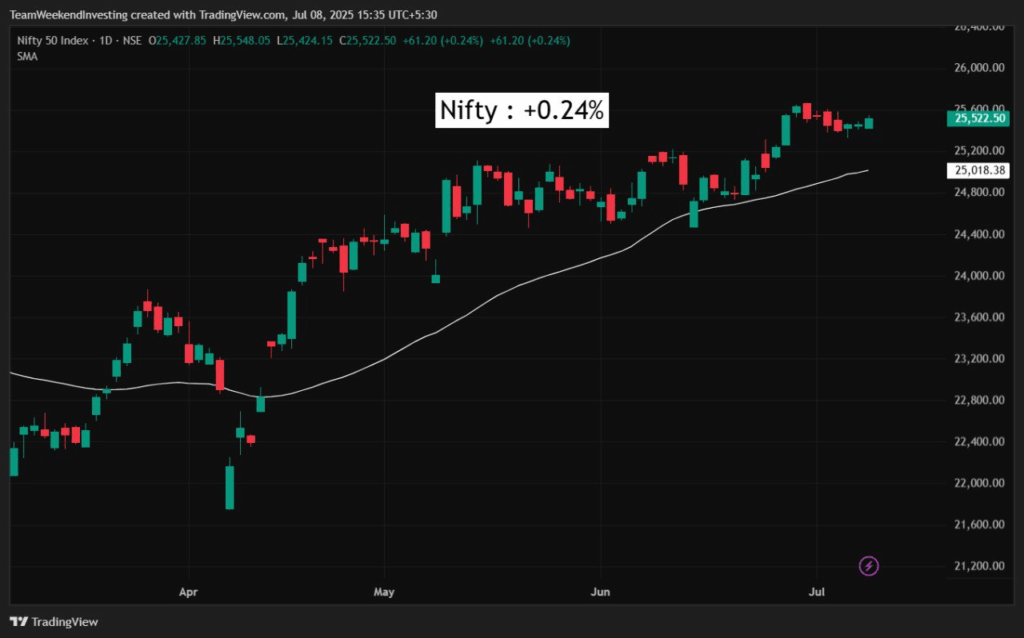
Nifty Next 50
Nifty Junior was completely flat

Nifty Mid and Small Cap
Mid caps saw some intraday damage but largely recovered, rebounding from 21,729 to close at 21,886—up nearly 150 points from the day’s low. Small caps also trimmed losses, ending just 0.23% down.
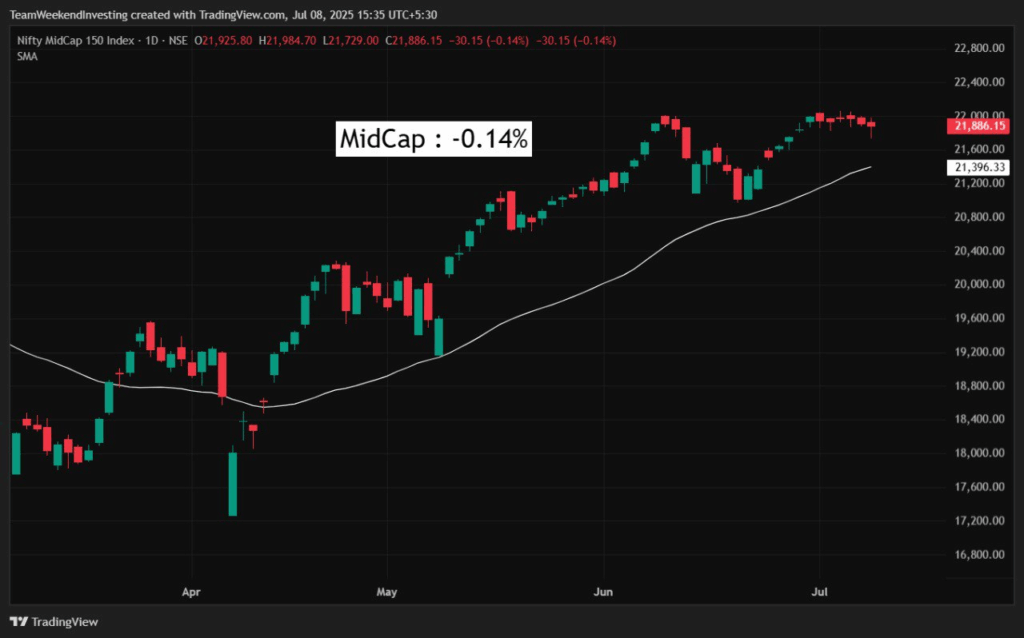
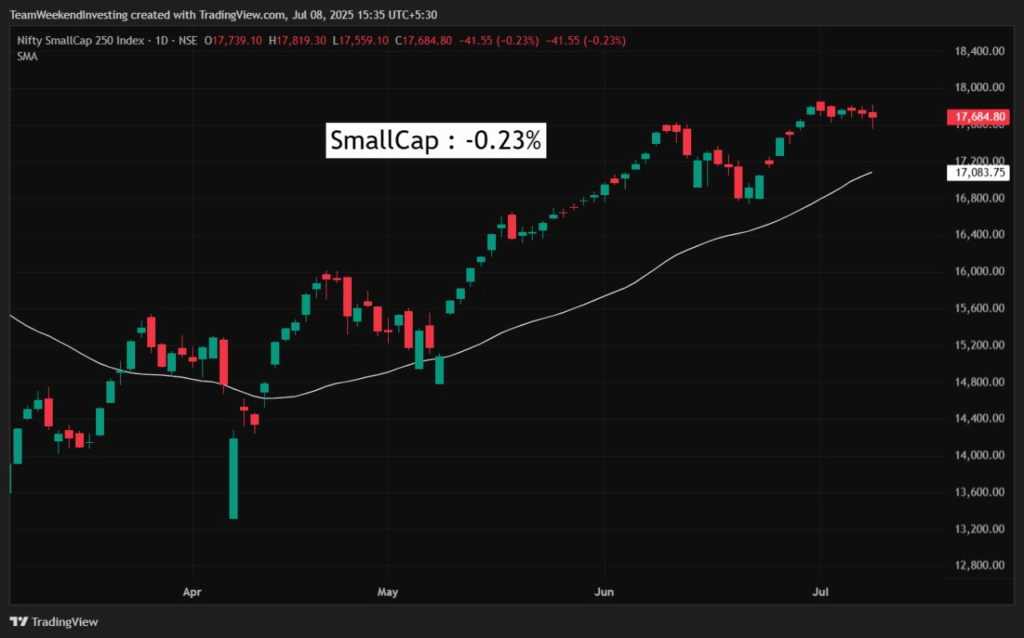
Bank Nifty
Bank Nifty outperformed, gaining almost 0.54% and finishing just shy of its record close.
The index’s resilience highlights continued strength in the financial sector.
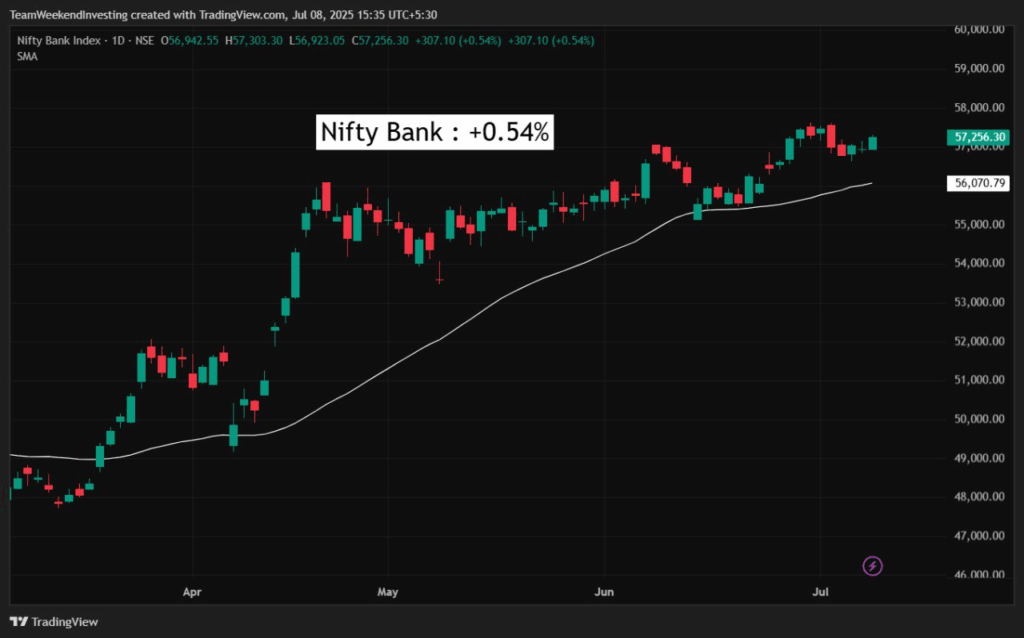
GOLD
Gold was down half a percent.
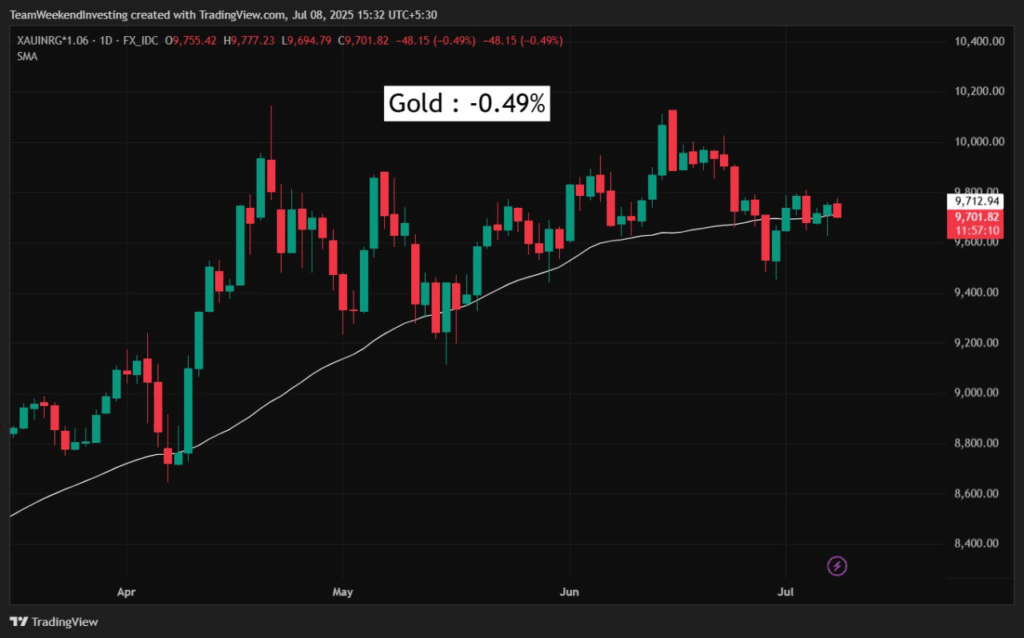
Advance Decline Ratio
The advance-decline trend reflected the market’s intraday volatility. After a strong start, advances dipped as weakness set in, but gradually recovered through the day. By the close, the ratio settled nearly even at 232 advances to 266 declines.
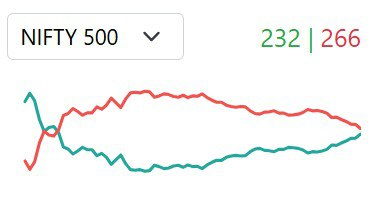
Heat Maps
One thing that also needs to be noticed is how many 52-week highs and 52-week lows are being made. The number of 52-week highs on the CNX 500 is still large while the number of 52-week lows is zero. There is no stock today that hit a new 52-week low in the CNX 500, which clearly indicates that the market is not very weak.
Some stocks, however, lost decent ground today. Titan was one of them, down 6%. Dr. Reddy’s fell 2%, and Axis Bank declined 1%. Other notable names like Maruti, Unilever, Bajaj Auto, and Cipla also fell around 1%.
On the positive side, Kotak Bank stood out. State Bank of India, HDFC Bank, Asian Paints, NTPC, and Grasim also performed well, particularly in the Nifty and Next Nifty space.
In the broader market, names like Bajaj Holding, Bosch, TVS, Hyundai, Zydus, Torrent Pharma, VBL, Britannia, United Spirits, CG Power, and Bank of Baroda lost ground in the range of 0% to 2%.
Naukri staged a recovery, along with PFC, REC, ICICI, and BPCL. IOC has also been doing well over the last few days. DMart ended the day with a modest decline of about 0.5%.
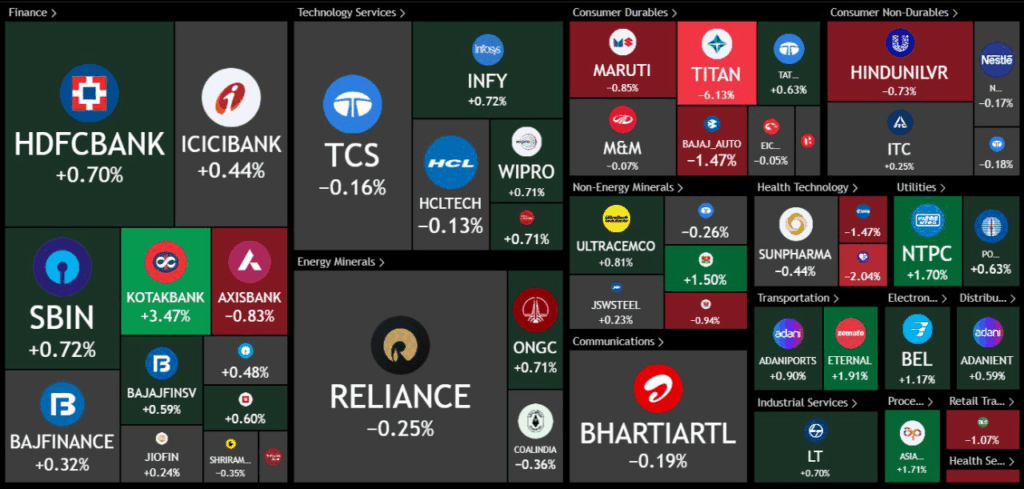
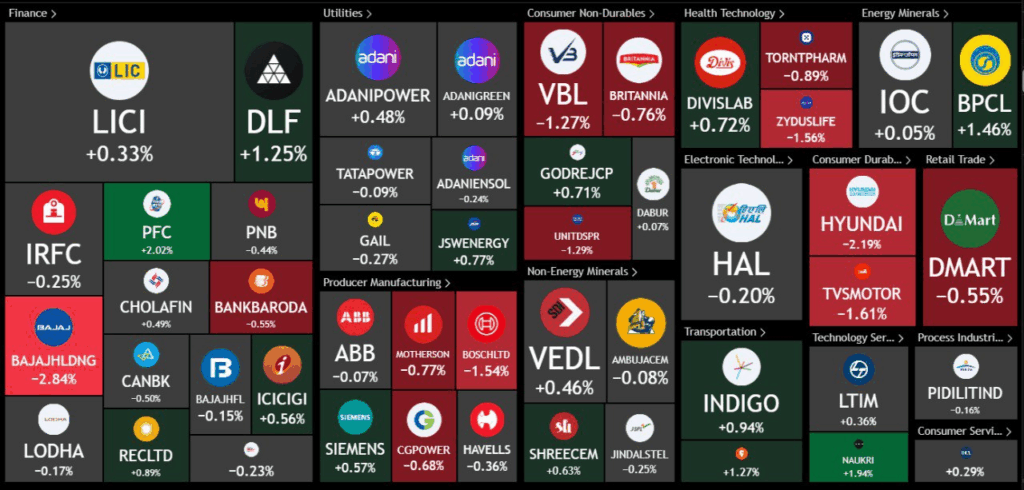
Sectoral Overview
In the sectoral trends, Capital Market stocks were hit hard, falling 1.65% for the day. However, considering that the sector is up 61% over the last one year, a bit of profit-taking here isn’t too concerning.
Pharma declined 0.9%, led by weakness in Cipla and Dr. Reddy’s, while the rest of the sector remained muted.
On the positive side, Nifty Financial Services, Nifty Public Sector Enterprise, Tourism, Central PSEs, and Real Estate sectors posted notable gains, with Real Estate bouncing back with a 1% move—part of its usual rotation pattern seen every few days.
Financial Services continued to hold up well, with Private Banks also gaining 0.66%.
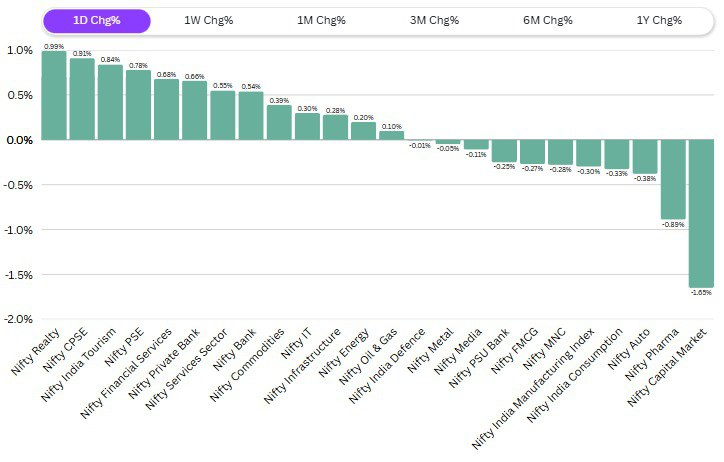
Sector of the Day
Nifty Realty Index
Real estate moved up 0.99%, coming off a small base. Stocks like Brigade, Phoenix, Anant Raj, Prestige, and DLF had a decent day, contributing to the sector’s strength.
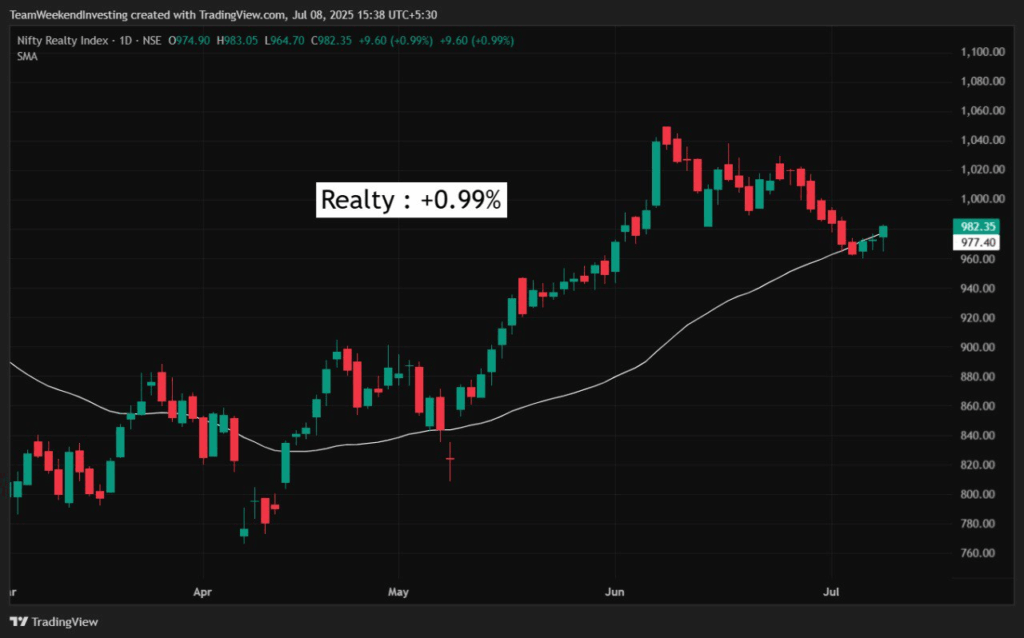
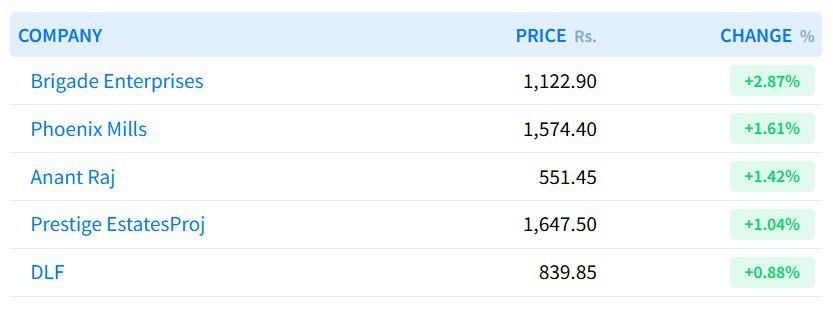
Story of the Day: The Hidden Truth of Returns
Most investors tend to overlook simple strategies, assuming complexity is more effective. However, simplicity can be powerful—especially in asset allocation. A basic strategy of allocating equal weights to large caps, mid caps, small caps, and gold, with monthly rebalancing, has produced striking results. Over nine years, this combination yielded a value of 447 from a base of 100—better than large caps, small caps, or gold individually, and with far lower drawdowns. (see the image below)
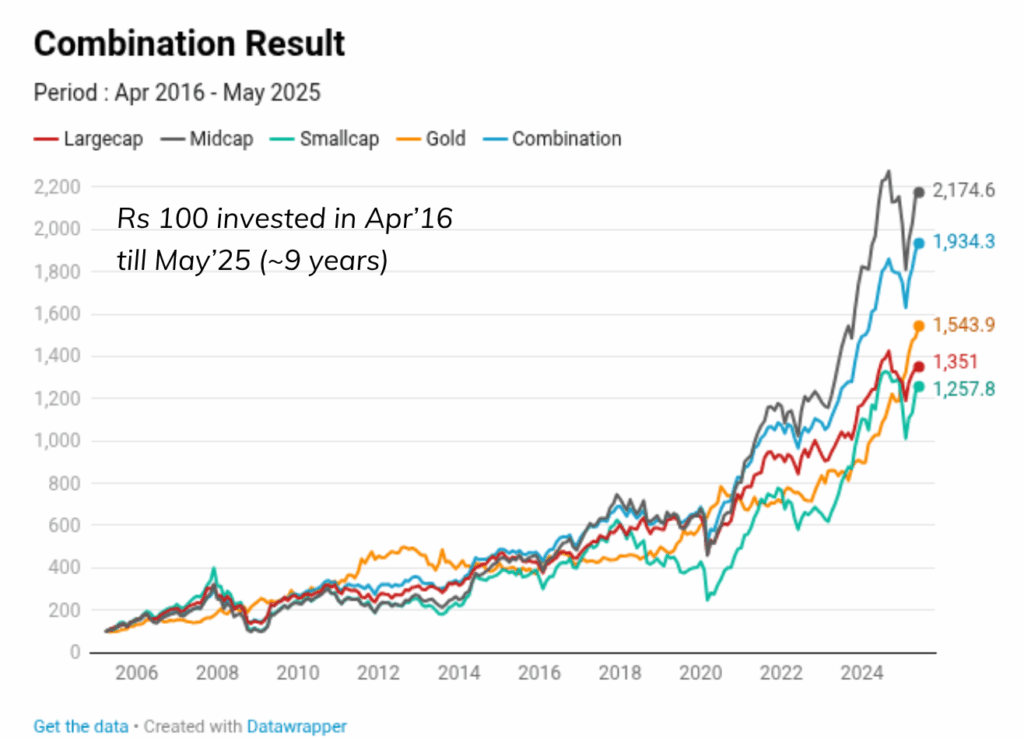
CAGR and drawdown data show how this approach balances risk and reward.
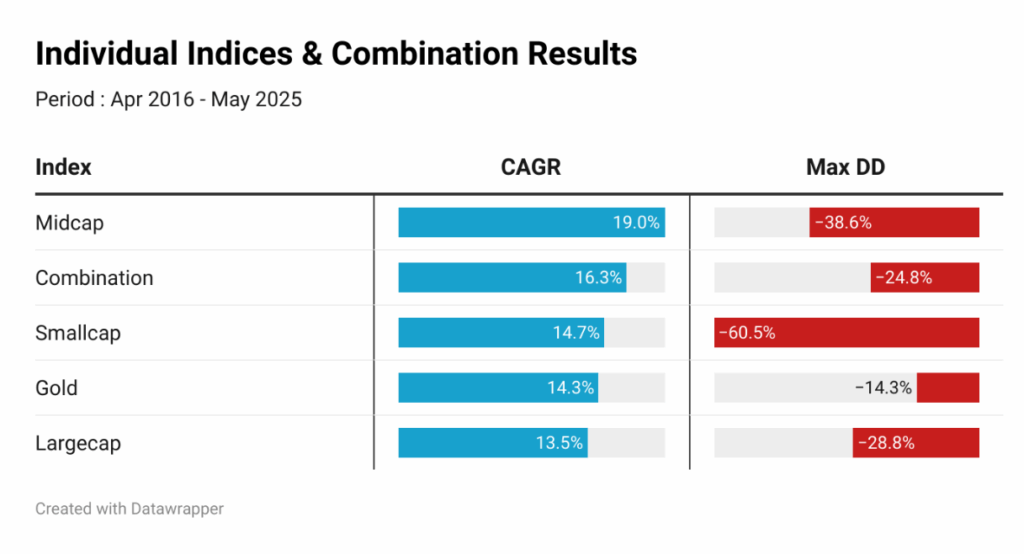
While mid caps delivered a CAGR of 19% with a 38% drawdown, the equal-weight combination produced 16.3% CAGR with only a 24.8% drawdown. Even when compared with gold, which had the lowest volatility, the portfolio achieved better returns. The drawdown across all components—gold (15%), small caps (60%), large caps (30%), and mid caps (40%)—was smoothed by combining them, resulting in only 24% downside for the portfolio.
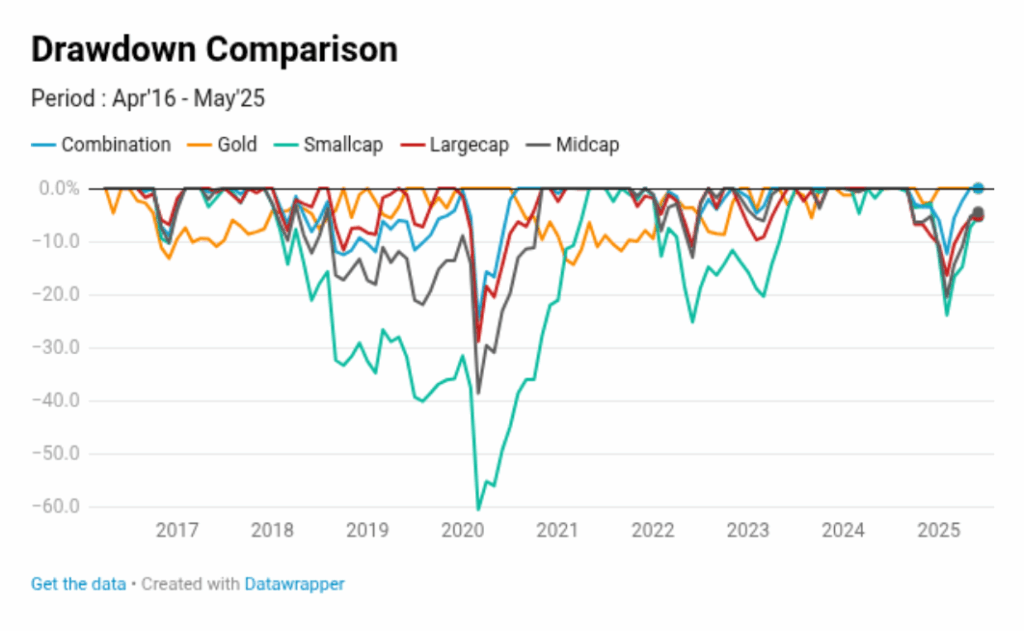
Further SIP-based analysis confirms this pattern. Across ten and twenty-year periods, and at both market peaks and bottoms, the LMSG (Large-Mid-Small-Gold) combination outperformed or matched other portfolios, while keeping volatility lower. For example, over the past decade, equal weighting of LMSG delivered a 17.8% XIRR, exceeding large and small caps and just behind mid caps.
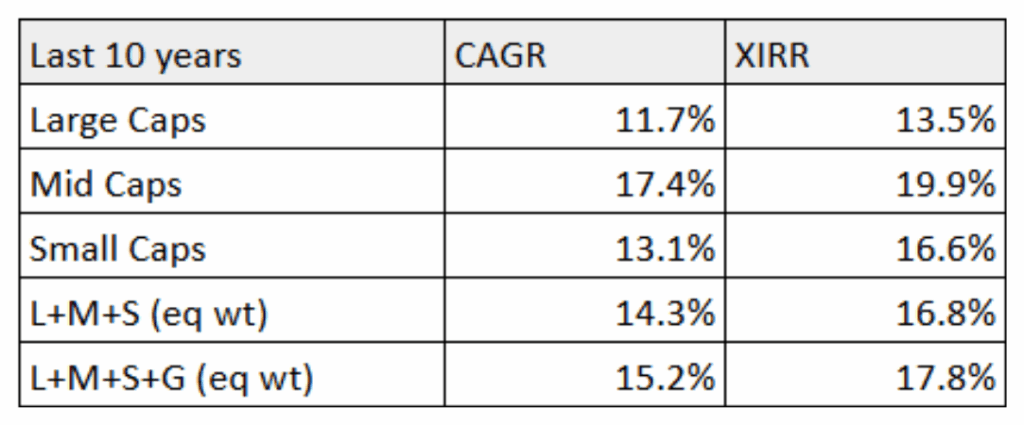
From market peaks like Jan 2008 or Jan 2018, LMSG SIPs continued to show higher consistency and better resilience.(see the images below)
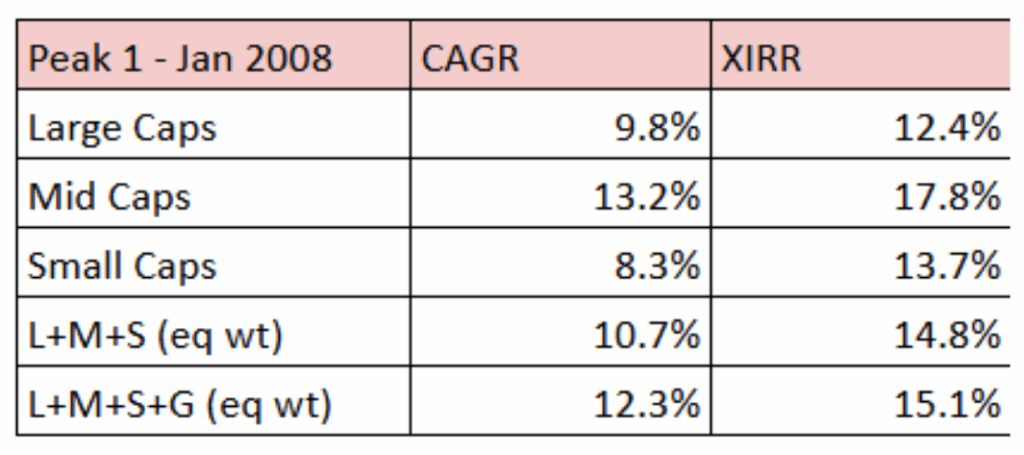
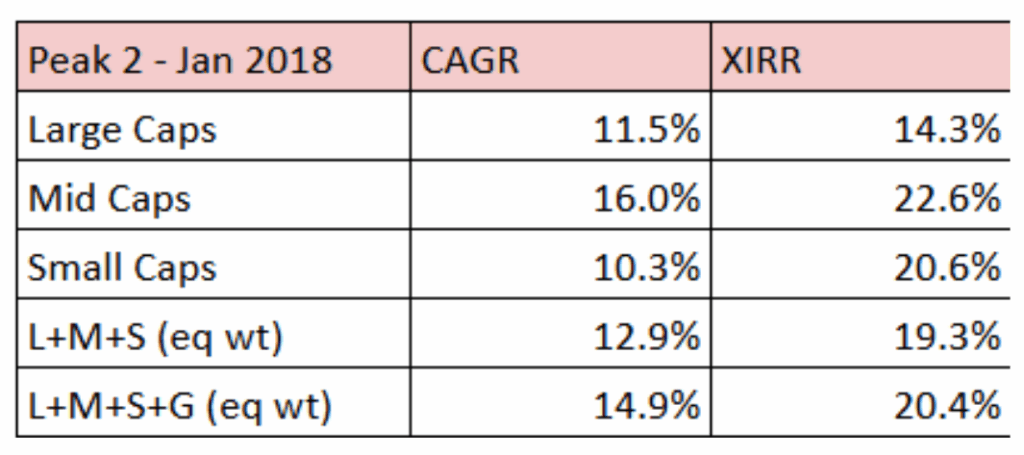
The key insight: diversified, equal-weighted portfolios lower volatility and reduce the likelihood of panic exits, which often derail investment outcomes. Even during extreme corrections like COVID-19 or the 2008 crash, the diversified combination outperformed individual indices in terms of stability.(see the images below)
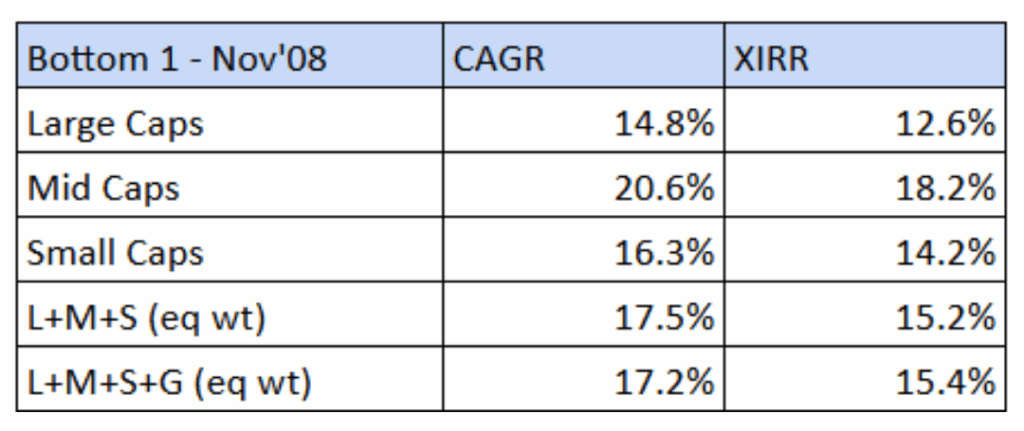
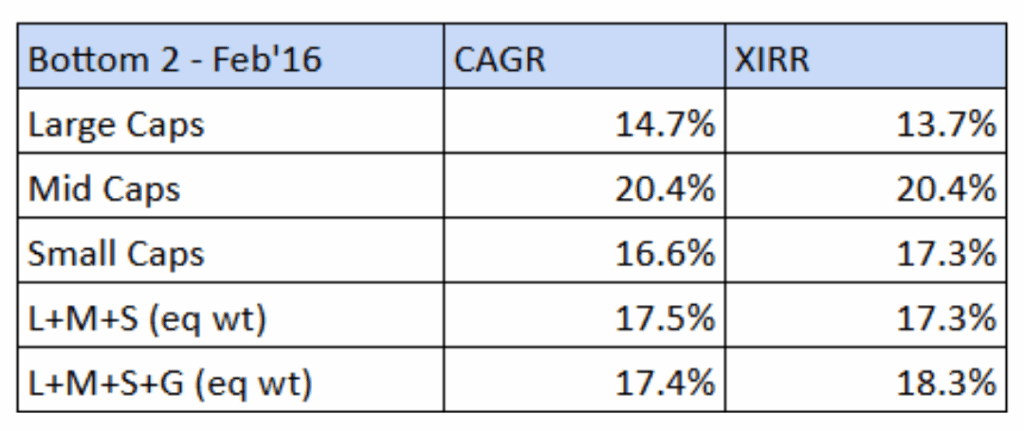
The study reinforces that simplicity does not equate to ineffectiveness. A basic, rule-based strategy like LMSG with monthly rebalancing can deliver strong, long-term results without relying on complex models or predictions. Lump sum investing benefits only during clear uptrends, while SIPs smooth returns during volatility. Including gold further enhances resilience, even from market bottoms.
Ultimately, simple asset allocation done consistently outperforms erratic discretionary investing. Instead of chasing sophisticated strategies, sticking to basic principles and disciplined rebalancing can yield substantial returns.

